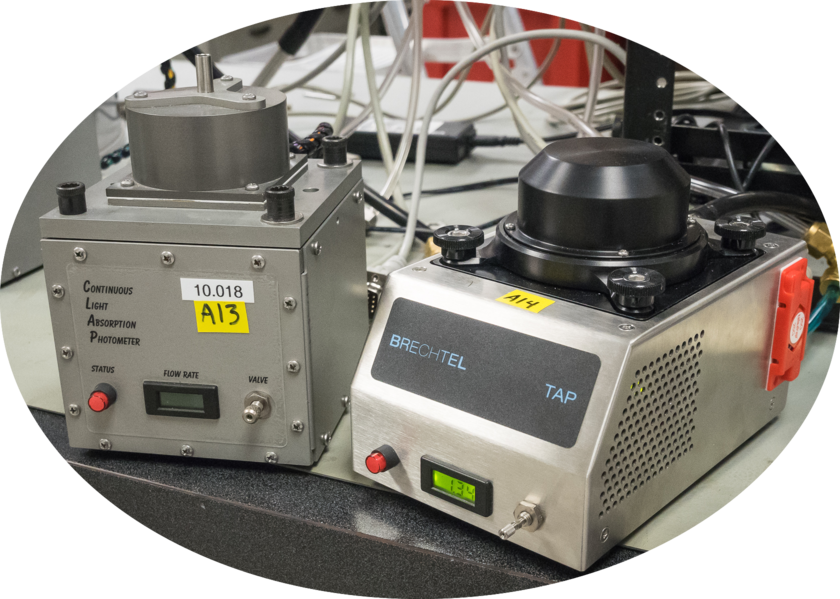Continuous Light Absorption Photometer (CLAP)
General Description
The Continuous Light Absorption Photometer (CLAP) is a NOAA/GML developed, filter-based method that measures light absorption by particles at three wavelengths (467, 528, 652 nm). The CLAP is functionally comparable to a widely-used commercial instrument, the Particle/Soot Absorption Photometer (PSAP) produced by Radiance Research, Inc. (Seattle, WA), but does not suffer from the same operating limitations as the PSAP (data loss from overloaded filters, unheated optics block, internal black box processing of data). The choice of a functionally comparable design to the PSAP allowed measurements from the CLAP to use the well-established PSAP correction schemes that account for known imperfections in all filter-based absorption measurements. Ogren et al. (2017) describes the design, operation and uncertainties of the CLAP and presents comparisons with the PSAP at several NFAN sites.
The primary advantages of the CLAP, compared to the PSAP, are that it is one-tenth the size, can sample for roughly eight times as long before the operator needs to change the filter, and is temperature-stabilized to reduce sensitivity to changes in room temperature. In addition, the computer software running on the internal microprocessor is completely open on the CLAP. These features make the CLAP much better suited for long-term monitoring applications, and currently NOAA-built CLAPs are deployed at 23 stations around the globe.
During the initial field deployment of the NOAA-built CLAPs, they were run in parallel with PSAPs for over a year at multiple stations to confirm that the CLAPs and PSAPs give comparable results. Subsequently, NOAA has retired the PSAPs from service at its monitoring stations.

At sites in the NOAA collaborative network we typically operate the CLAP sampling downstream of the nephelometer. The sample flow for the CLAP is picked off at the TSI integrating nephelometer blower block.
A commercial version of the CLAP, renamed "Tricolor Absorption Photometer" (TAP), is now being produced by Brechtel Manufacturing, Inc.







